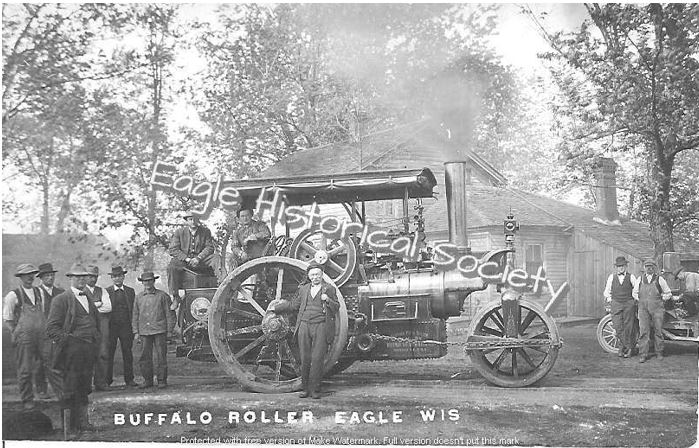The Buffalo Roller
It soon became clear that financial viability and success for communities depended on reliable transportation, so road building and maintenance became priorities for communities across the state of Wisconsin. Road builders learned that multi-layer roadbeds with a soil and crushed stone base that was compacted by heavy rollers tightened the road and required less maintenance.

Initially, the rollers were attached to teams of horses, but by the second half of the nineteenth century, the steam engine brought new ideas to road construction. Originally manufactured and sold in Europe, the steam roller made its way to American road construction in the early twentieth century. The Buffalo Roller was among the first of the steam powered rollers in America. The company got its start in 1916 as The Buffalo Steam Roller Co. of Buffalo, N.Y., and Kelly-Springfield of Springfield, Ohio. The roller was positioned on the front and the operator could steer using a heavy chain on each side, attached to a steering wheel. With large smooth rear wheels powered by a steam engine, these vehicles weighed in at ten tons. Many of the early steam rollers were in use building highways up until the 1960’s. Road builders later added tar as a binder and asphalt roads capable of supporting heavy vehicles emerged. Highway data from 2017 stated there were 4.17 million miles of road in the United States.
(Excerpts from “Early Transportation” by Mike Rice)
–
–
–